STAAR Prep: A K-5 Argumentative/Opinion Writing Strategy
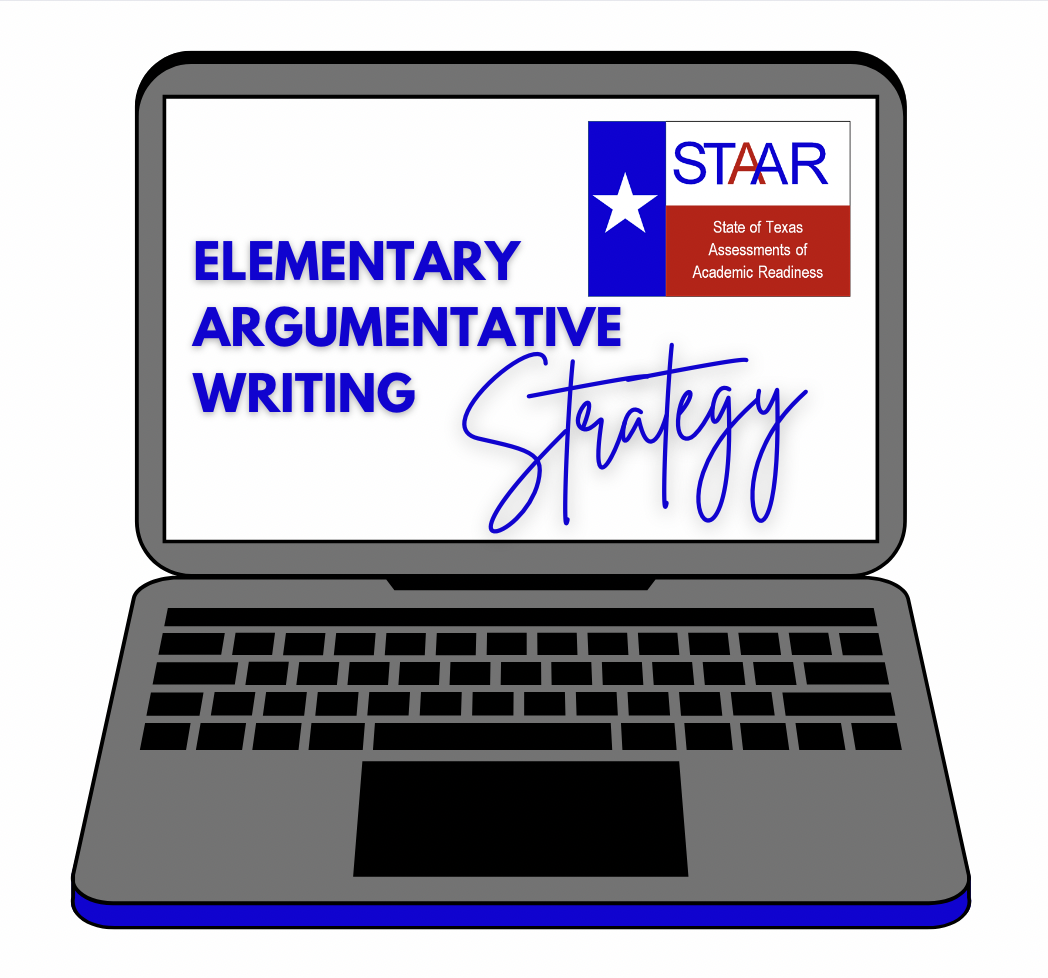
As we all know here in Texas, every grade level will have an “extended constructed response” on the STAAR test this school year. This response will either be informational or argumentative and will be an “essay.” Let’s take a look at exemplars and rubrics before we dive into an argumentative/opinion writing strategy for the elementary grades.

STAAR Test Example Responses
Here are some exemplars for grades 3 and 5 (for both short and extended constructed responses) provided by TEA (Texas Education Agency). These prompts and exemplars come from the field test, and this document walks you through the scoring. I go over more information about the constructed responses, STAAR test tools, and provide a few resources in Reading Language Arts STAAR Test Resources .
STAAR Argumentative Writing Rubrics
- RLA Grades 3-5 Argumentative/Opinion Writing Rubric (10/18/22)
- RLA Grades 3-5 Argumentative/Opinion Writing Rubric-Spanish (10/18/22)
- RLA Grades 3-5 Informational Writing Rubric (10/18/22)
- RLA Grades 3-5 Informational Writing Rubric-Spanish (10/18/22)
What’s the Difference Between Short and Extended Constructive Responses?
Here are exemplars from the stand-alone field test. The 5th grade prompts and responses are for the same passage, “Steam and Sail”. The responses on the left are short constructed responses (SCR), and the one on the right is an extended constructive response (ECR). The grade 3 response is within the writing domain, not the reading domain. There are no exemplars for grades 3 and 4 to reference for ECR in the scoring guide.
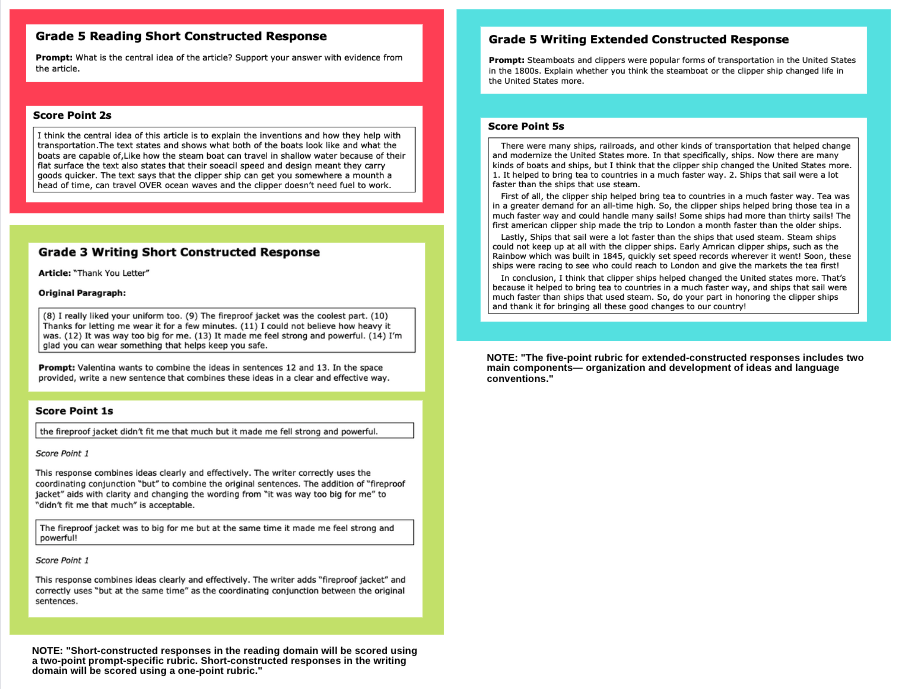
How to Teach Argumentative/Opinion Writing
So, of course, there are lots of ways to teach opinion writing to elementary students. But I’m a huge fan of the Gradual Release of Responsibility (GRR) , and I’m also a huge fan of discussion and verbal practice before beginning the writing process. That said, I’m going to walk through using GRR with some resources for teaching opinion/argumentative writing at the elementary level. This strategy is adaptable and meant to be built on over time, so the example given isn’t necessarily 5th grade, score point 5 level, but it can get students there with practice and some adapting!
Review: Fact vs. Opinion
Whether you’re teaching first grade or fifth grade, it’s always good to start with a review of the difference between fact and opinion. Here are a few resources for this.
- Florida Center for Reading Research Fact or Opinion Game
- Factile Fact vs. Opinion Game
- Teaching with a Mountain View: Four Activities to Teach Fact vs. Opinion in Upper Elementary
Talk Before You Write!
This is what I like to call, the “Speak Cycle.” Students may need to practice one or more of these steps, or the whole cycle, multiple times before moving on to writing. Speaking before writing helps students learn to organize their thoughts, look for text evidence, and also familiarizes them with proper sentence structures for opinion writing before they actually start writing. You might think, “Ok, maybe for lower elementary.” Sure, but even older students benefit from verbal practice before writing! It’s a form of rehearsal and planning.
1. Whole Group: Read the text. Discuss opinions as a class. Highlight the evidence.
Before broaching the topic of supporting evidence for an opinion, read the text and discuss opinions. Then ask students for supporting evidence. It’s much easier to talk about supporting evidence than it is to start writing about it from the get go! Here is an example text that works well for third and fourth grade from Education.com . I recommend starting with short texts and then, as stamina improves, introducing longer texts over time.

“Today, we’re going to read a text together about ___________. We’re going to discuss our opinions on ___________ based on what we read, and I’m going to highlight facts from the text to help support our opinion.” [Read the text] [Read the question] “So, what are our opinions?” [Student one offers an opinion.] “Thanks for sharing your opinion! What information in this text led you to think that?” [Highlight what the student references in the text. Repeat this with other examples.] “Ok! So, from our reading today, we formed the opinion ______. And we formed that opinion because [read off highlights of the text].”
In this practice, you are showing the students how to identify and highlight supporting evidence in the text, but this is first a verbal exercise. Start with easier texts and move to more difficult texts as students become more autonomous.
You can create your own questions, but here are a few resources that offer texts with questions for opinion writing.
- Education.com
- Ereadingworksheets.com
- National Council of Teachers of English (NCTE)
2. Small Group: Read the text. Discuss opinions with a small group. Highlight the evidence together.
This works best if you group students on similar reading levels. Give each student in the group the same short text that’s on their reading level. Read it together, discuss an opinion, and have students highlight the supporting facts with your guidance. Then, have students verbalize their opinions and reference the highlighted text evidence. Students should speak using the same sentence structures you want them to use when writing. Having these up as a visual is great for practice! This is all to get students ready to write.
- “I think…”
- “In my opinion,…”
- “I believe that…”
- “This is my opinion because…”
- “According to the text,…”
- “First, the author states…”
- “Second, I read that…”
3. Independently: Students read the text, highlight evidence, and discuss their opinion and supporting evidence with a partner or group.
Have students read a short text, think about their opinion, and highlight facts to support their opinion on their own. Students can discuss an explanation of their opinion and text evidence with a partner, or they can explain it in a small group setting. Students should still be speaking using the same sentence structures you would like them to write with.
It’s Time to Write!
Now that students are familiar with reading, forming an opinion, highlighting evidence to support their opinion, and using sentence structures verbally, it’s time to start writing. But it’s not quite time for them to write independently. First, we will model good writing for them, following a similar process to the speaking cycle.
1. Whole Group: Read the text. Highlight the evidence. Model the writing for the class.
So this step is similar to step one of the speak cycle, but instead of just discussing, you are going to be modeling the writing. Here’s one formula I like to use called, “It’s Peanut Butter Jelly Time!,” and I’ve included an example using the video game article from the beginning of this post.
The Bread: The Introduction (2-3 sentences)
- Write one sentence to state your opinion.
- Write a second sentence introducing two main facts from the text that support your opinion.
“In my opinion, video games are harmful to kids. Video games can be unhealthy. They can also be too violent.” (Just an example! This is not necessarily reflective of my actual opinion on video games.)
The Peanut Butter : Paragraph 2 (2-3 sentences)
- Write a few sentences to support the first fact.
“According to the text, video games can be unhealthy if children play them for too long and don’t move around or exercise. This can make kids overweight and have health issue.”
The Jelly : Paragraph 3 (2-3 sentences)
- Write a few sentences to support the second fact.
“Sometimes, violence can make kids fight, and this can be harmful to friendships. Violence isn’t good for kids’ brains and can lead them to become bullies.”
The Bread: The Conclusion (2-3 sentences)
- Say your opinion – again.
- Say why your opinion is true – again.
“I believe that video games can be harmful to kids. Sitting for too long in front of the game can cause health problems and violence can lead to aggressive behavior. It’s better for kids to be active and be more positive and less violent.”
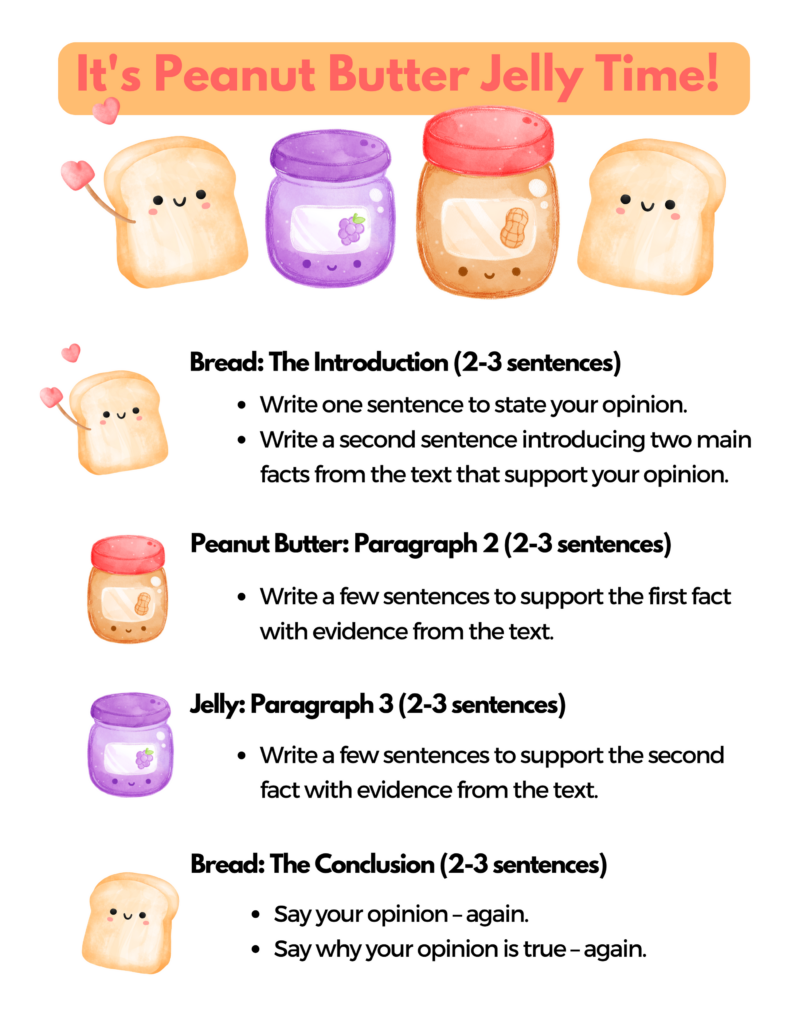
2. Partnered Writing: Students read the text together, highlight the evidence, and write with a partner.
It’s similar to the whole group exercise, except that students are practicing writing more independently with a writing partner/buddy. In this step, you can offer students graphic organizers or an outline template to help them remember all the elements of their argumentative writing. They can work together to write one essay or they can each write an essay and then review each other’s writing.
3. Independently: Read the text. Highlight the evidence. Write the essay.
At this stage, students are practicing writing on their own. They may or may not need supports like sentence starters, graphic organizers , checklists , and visuals to reference in the room. But the goal is for students to be able to produce writing that expresses their opinion in response to a text and provide text evidence to support that opinion.
Practice, Practice, Practice!
It takes a lot of time and a lot of repetitive practice. As Miguel Guhlin references in his article, Writing Strategies: Insights from a Twitter Chat , discussing, teaching sentence structures/vocabulary, and showing examples isn’t enough. Deliberate, repetitive practice, and time, are key to teaching writing.
Do you have other ideas, strategies, or resources that have worked well for you and your K-5 students when it comes to argumentative/opinion writing? Please share them with us in the chat! We’d love to hear what’s worked in your classroom.
Additional STAAR and TEKS Articles You May Find Useful
Reading Language Arts STAAR Test Resources
The K-5 ELAR TEKS and Free, Editable Spreadsheets
The K-5 Math TEKS and Free, Editable Spreadsheets
A Practical Strategy for Teaching Editing Skills
A Powerful and Easy Strategy for Teaching Text Evidence

Emily has been in education since 2008. Prior to joining TCEA in 2021, she worked as a preK-8 grade principal for four years. Additionally, she taught middle school music, preschool, prekindergarten, and second grade in a trilingual school setting. Before that, she was a K-8 technology integrator and taught second through fifth grade enrichment classes and kindergarten, fifth, and sixth grade technology classes. She has a master’s degree in teaching, specializing in elementary education, and her Certificate of School Management and Leadership (CSML) from Harvard Graduate School of Education. Outside of work, she enjoys seeing movies, attending concerts, going camping and hiking, and spending time with her two cats.
Writing Strategies: Insights from a Twitter Chat
Resources shared at the 2023 tcea convention & exposition, you may also like, whooo’s reading: beyond multiple choice comprehension questions, spark creativity in the classroom with story dice, the new digital sat® and the future of..., five powerful citation tools to unlock academic success, nanowrimo’s young writer’s program (ywp), ai meme generators and classroom activities, cer resources for the science classroom, two google ai tools: help me write and..., how reliable are ai detectors, what you need to know about copyright.
Loved the succinct info!
Leave a Comment Cancel Reply
Save my name, email, and website in this browser for the next time I comment.
You've Made It This Far
Like what you're reading? Sign up to stay connected with us.
*By downloading, you are subscribing to our email list which includes our daily blog straight to your inbox and marketing emails. It can take up to 7 days for you to be added. You can change your preferences at any time.
You have Successfully Subscribed!
By subscribing, you will receive our daily blog, newsletter, and marketing emails.
- help_outline help
iRubric: STAAR English II Persuasive rubric

Answering the STAAR Essay Question
The 2023 STAAR Reading test will include short and long response essay questions for 3rd, 4th, and 5th grade students.
The question on every teacher’s mind is: How do you write a GOOD STAAR essay?
TEA has said that they changed the STAAR Reading test, so questions are aligned to what teachers are actually teaching in their classrooms.
Although, many Texas third, fourth, and fifth grade teachers disagree. Students struggled enough with reading, understanding, and answering in-depth multiple-choice questions.
Now, on top of that students must write a well composed essay that answers a question about the STAAR reading passage and includes evidence from the text to support their answer.
Without a doubt, students need to learn strategies to write their STAAR essay effectively . Just as we teach students STAAR revise and edit strategies and STAAR reading strategies .
Additionally, they need plenty o f opportunities to practice writing essays before the STAAR Reading Test.
These STAAR essay tips will help you and your students write GOOD STAAR essay.
STAAR Essay Rubric
Understanding the rubric is a key component to writing a good STAAR essay.
First of all, there are two types of STAAR essay questions. They include a short-constructed response and a long-constructed response.
The short constructed response question is worth a total of 2 points . This essay is scored solely on the answer, and points are not deducted for conventions.
There will be one long constructed response question on the 3rd, 4th, and 5th grade STAAR Reading test . This question will be scored on a 5 point rubric .
Students will receive up to three points for answering the question correctly and supporting their answer with evidence.
The additional two points will be for using correct conventions.
However, two people will be scoring the essay which brings the long constructed response total point value up to 10 points .
STAAR Constructed Short Response Question
The short constructed response question should be between two to five sentences long .
First, clearly state the answer and then u se evidence from the text to support the answer.
Another short answer question that may be included on the STAAR Reading test is a question about revising a sentence .
Students may be asked to rewrite a sentence that repeats information or is awkward.
STAAR Constructed Long Response Question
The long response essay question on the STAAR reading test is worth a total of ten points .
Therefore, it is important to prepare your students for answering the STAAR essay question.
First, explain the question stem. The question itself is almost a page long (see example below). The actual question is in the second paragraph.
A commonly used and well-liked essay writing strategy is the RACE strategy .
To begin, students restate the question. Then they must answer all parts of the question. They must cite evidence from the passage to support their answer. Finally, they explain their answer.
Essays should include 3 to 5 paragraphs in order to answer the question completely.
More points are given to students who clearly state their central idea and organize their writing using transition words.
After completing the essay, it must be reread to ensure correct spelling, punctuation, grammar, and sentence structure. These are all reasons that points could be taken away.
There are several sample essays in the TEA scoring guide that give both teachers and students an idea of what a STAAR essay should look like.
Practice Make Perfect
As you can see, it is necessary for students to have multiple opportunities to practice essay questions that are tied to a text.
Luckily, as you are reading novels, guided reading books, and passages in class, you can create essay questions and have your students answer them.
In addition to answering the question, be sure your students know how effectively type their answers since all STAAR testing is online.
I have created a STAAR Reading Strategies Bundle that includes an engaging, hands-on activity that teaches students how to answer long response and short response STAAR Essay questions.
Other Helpful Blog Post over the STAAR Reading Test
Teach to the Test: How to Prepare Students for the STAAR Reading Test
5 Ways to Keep Students Engaged in Your STAAR Reading Review
STAAR Reading Test Taking Tips
STAAR Revise and Edit Practice
STAAR Reading Resource Round Up
- Read more about: Elementary Reading , STAAR Reading
You might also like...

FREE STAAR Reading Resources
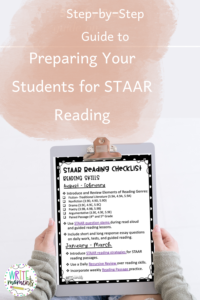
Step-by-Step Guide on Preparing Your Students for STAAR Reading

Introducing Constructed Response Questions
Free grammar pacing guide.
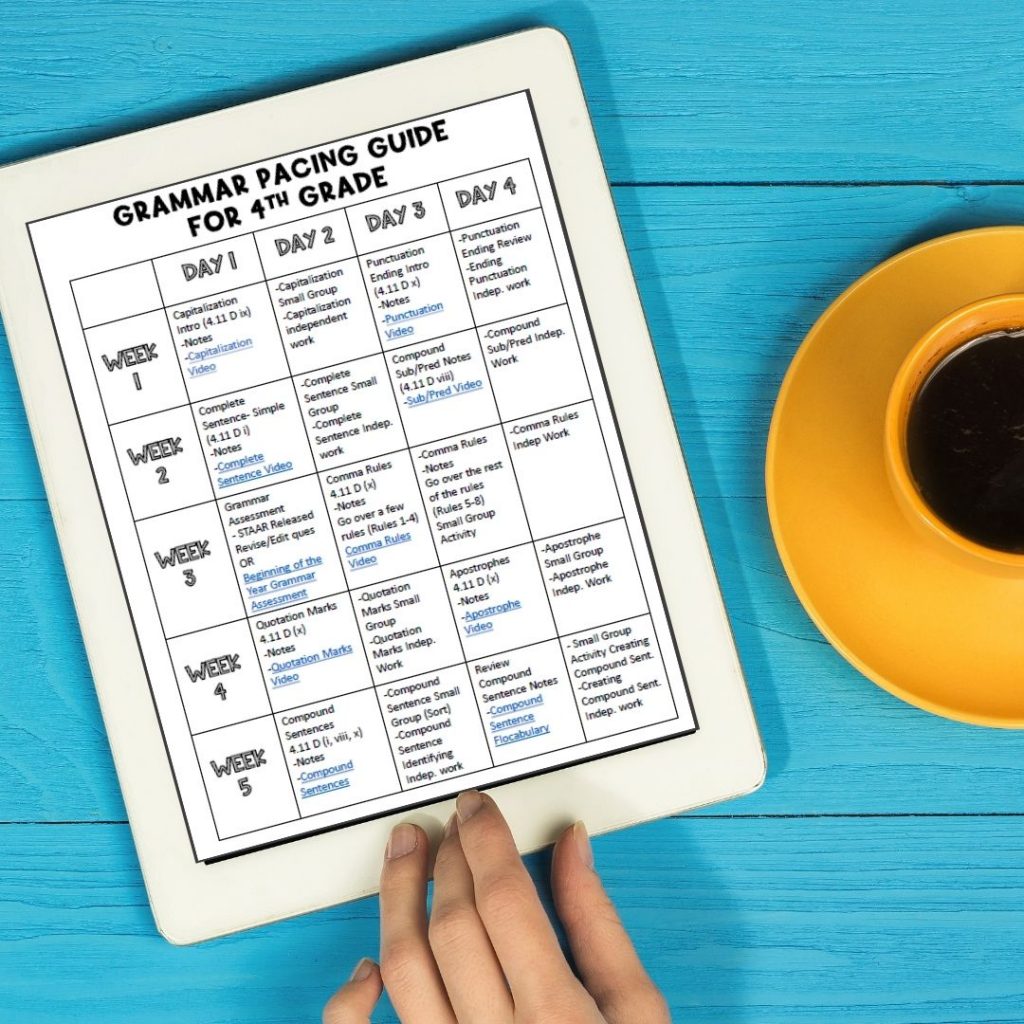
Grammar skills are necessary for revise and edit questions. This guide fits all the grammar TEKS into the first 6 weeks of school, so you can get introduce revise and edit questions by October.

Meet the Author

Hi! I’m Christine. I help Texas 3rd-5th grade teachers to build confident readers and writers with TEKS aligned, engaging ELA printable and digital resources.

Let's Connect
Find it here.
© Write Moments • Website by KristenDoyle.co

Eat, Teach, Slay

English I and II STAAR EOC Test Prep- Writing
I have taught both English I and English II in Texas. Both grades have an English STAAR EOC test that includes a writing portion. On the English I test students have to write an expository essay. On the English II test they have to write a persuasive essay. I’ve put together the strategies and models I’ve used in my classroom into these materials that you can use. They can purchased in my TPT store. You can either buy a bundle for both ENG I and ENG II or purchase the one you need.
I am in Texas and originally created this for my English II students to help prepare them for the persuasive or expository essay they would have to write on the STAAR English II or I EOC test. The advice and common mistakes are aimed towards the goal of passing that writing test. However, I have a PhD in Composition and have tried to create this unit to fit best practices for persuasive essay writing in any situation (whether for a standardized test or a dual credit class or in general).
I did not include a rubric because what you are evaluating can change greatly between standardized test, dual credit courses, or general classroom writing goals. If you are using this to prepare students to write a persuasive essay on a standardized test go to your state testing website and look for a rubric. Texas STAAR has a rubric and lined writing paper for the English I expository EOC essay or English II EOC persuasive essay. You can find released Texas STAAR tests here on the state website. You can find the rubrics for the writing portion of the STAAR English I and II EOC here along with other state writing resources .
Here is a preview of what it is in the persuasive bundle: This writing kit is good for any persuasive essay needs, not just the Texas STAAR test! It has been updated and is now 27 pages long.
It includes: – 5 pages of writing instructions handouts with detailed examples. It goes paragraph by paragraph. – It has two versions on the example. One version has notes about the organizational structure. – Tips & Common Mistakes to Avoid – A list of transition/linking words – A persuasive essay outline map for students who need a short structure guide – Outline with the organization structure labeled – Blank outline (some states allow blank organizers to be used on standardized tests) – A list of types of evidence with definitions – A list of 12 persuasive writing prompts – 12 Persuasive Essay Writing Prompt Cards – Notes for the teacher on how to use this kit
Here is a preview of what it is in the expository bundle: This expository essay writing kit is 25 pages.
It includes: – 4 pages of instructions on how to write the essay. It breaks the essay down paragraph by paragraph with examples. Includes the introduction with an attention getting device and thesis statement, body paragraph structure, transitions, conclusion, etc. – An example essay with and without a dissection of its parts – An outline graphic organizer with the components labeled – A blank copy of the graphic organizer (some states allow this on state tests) – A list of common mistakes and advice – A handy outline map to briefly remind students of the structure (handy for students with IEPs for additional handouts) – A list of transition (linking) words for student reference – A list of 12 expository prompts – A set of 12 expository prompt cards that can be printed and laminated for student use – Notes for the teacher with tips on how to use this kit.
+More about the writing prompt cards+ The prompt cards allow for practice with various prompts. You can print each prompt on a different color paper (the duplicate of that prompt should be the same color as the original). You can laminate them then have students choose a topic at random to write about. The second time around they merely pick a different color to ensure they get a different topic. Included is a blank set of cards for your own prompts.
- Click here to buy the Expository Writing Kit for the English I STAAR EOC
- Click here to buy the Persuasive Writing Kit for the English II STAAR EOC
- Click here to save money by buying them both in one bundle

Share this:
- Click to share on Twitter (Opens in new window)
- Click to share on Facebook (Opens in new window)
You must be logged in to post a comment.
404 Not found
staar argumentative writing
All Formats
Resource types, all resource types.
- Rating Count
- Price (Ascending)
- Price (Descending)
- Most Recent
Staar argumentative writing
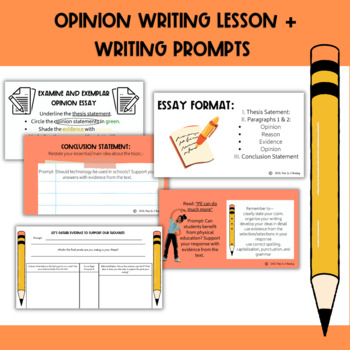
STAAR Extended Constructed Response Argumentative /Opinion Essay Writing Lesson

STAAR Argumentative Reading & Writing Practice Lesson

STAAR 2.0 Redesign Argumentative /Opinion Writing Rubric made Easy grades 3-5

DIGITAL WRITING PORTFOLIO STAAR PRACTICE REVISING EDITING ARGUMENTATIVE RUBRICS

- Google Apps™

FREE STAAR Argumentative Writing Student Bookmark

5th Grade *VIP* Growing BUNDLE! Extended Constructed Response Samples! STAAR

STAAR 2.0 Extended Constructed Response (ECR) Resources Bundle | English II

Extended Constructed Response ECR STAAR Writing Checklist and EDITABLE

STAAR 2.0 10 Weeks of Bell Ringers

4th Gr ARGUMENTATIVE Ext.Const.Resp. STAAR ELAR Redesign

ECR Relay Race: Engaging STAAR Writing Prep Grades 5-8 Comprehension 12 Prompts!

- Google Drive™ folder
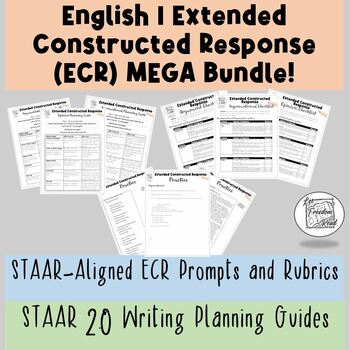
STAAR 2.0 Extended Constructed Response (ECR) Resources Bundle | English I

Argumentative Essay Writing Unit for Middle School - STAAR ECR

Lesson Plans English II STAAR EOC Persuasive Essay Scoring and Writing Workshop

NEW Texas STAAR Reading Constructed Response Toolkit

NEW STAAR Prep ECR - Fiction Passage: Bridge to Terabithia ★ Essay Practice

STAAR / EOC Extended Constructed Response (ECR) Prompts 3rd -Eng 2 Bundle Set 1

STAAR WRITING ECR PREP: Writing Introductions for STAAR ECR

- Google Slides™

ECR Practice STAAR Prompts-3rd Grade (For Use with 2022 STAAR Passages)-Bundle

EXTENDED SHORT ARGUMENTATIVE Responses Graphic Organizers Rubrics STAAR
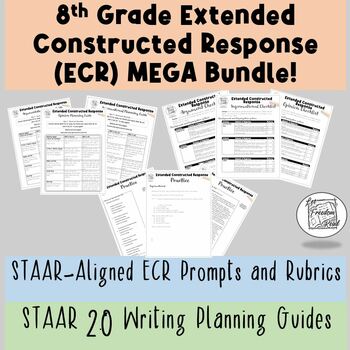
STAAR 2.0 Extended Constructed Response (ECR) Resources Bundle | 8th Grade

STAAR 2.0 Extended Constructed Response Argumentative Thesis Practice

STAAR WRITING ECR PREP: Writing Paragraphs for STAAR ECR
- We're hiring
- Help & FAQ
- Privacy policy
- Student privacy
- Terms of service
- Tell us what you think

IMAGES
VIDEO
COMMENTS
Texas STAAR Argumentative/Opinion Writing Rubric - Grades 6-EII. *For grades 6-EII, students may receive an ECR prompt asking them to respond by writing a letter (correspondence) to a specific audience. The argument/opinion is clearly identifiable. The focus is consistent throughout, creating a response that is unified and easy to follow.
The expression of ideas is basic because the writer's word choice is general ("what she had read"; "the way you see things"). Overall, this response reflects a partial understanding of the writing purpose. Conventions - 2. The writer demonstrates a consistent command of grade-level appropriate conventions.
Texas STAAR Argumentative/Opinion Writing Rubric - Grades 3-5. The argument/opinion is clearly identifiable. The focus is consistent throughout, creating a response that is unified and easy to follow. A purposeful structure that includes an effective introduction and conclusion is evident. The organizational structure is appropriate and ...
The essay is insubstantial because t he writer's response to the prompt is vague or confused. In some cases, the essay as a whole is only weakly linked to the prompt. In other cases, the writer develops the essay in a manner that demonstrates a lack of understanding of the persuasive writing task. Use of Language/Conventions
STAAR Argumentative Writing Rubrics. RLA Grades 3-5 Argumentative/Opinion Writing Rubric (10/18/22) RLA Grades 3-5 Argumentative/Opinion Writing Rubric-Spanish ... They can work together to write one essay or they can each write an essay and then review each other's writing. 3. Independently: Read the text. Highlight the evidence.
STAAR Spring RLA Extended Constructed Response Rubrics. Development and Organization of Ideas Trait3 2 1 0. Argument/ Opinion (Grades 3-5) • Controlling Idea/Thesis • (Grades 6-8, English I & II) Clear and Fully Developed Clearly Identifiable Focus is Consistent •Response Unified and Easy to Follow Present and Partially Developed ...
The essay is insubstantial because the writer's response to the prompt is vague or confused. In some cases, the essay as a whole is only weakly linked to the prompt. In other cases, the writer develops the essay in a manner that demonstrates a lack of understanding of the expository writing task. Use of Language/Conventions. l l l q
Reviewing the Rubric-Provide copies of the Official STAAR Persuasive Rubric and the Student-Friendly STAAR Persuasive Essay Rubric in Resources. Model the process of highlighting and underlining key terms of the rubric expectations. Compare and contrast the expectations at each score level, emphasizing the expectation for students is ...
esc12.net
Beginning with the 2022-2023 school year, reading language arts assessments include an extended constructed response, or essay, at every grade level. They also include short constructed-response questions. Students are asked to write the essay in response to a reading selection and write in one of two modes: informational or argumentative.
The essay is insubstantial because the writer's response to the prompt is vague or confused. In some cases, the essay as a whole is only weakly linked to the prompt. In other cases, the writer develops the essay in a manner that demonstrates a lack of understanding of the persuasive writing task. The development of ideas is minimal.
STAAR Alternate 2 TELPAS TELPAS Alternate Resources En español Texas Education ... Back English II Persuasive Writing Rubric Sep 7, 2021. English II Persuasive Writing Rubric Sep 7, 2021 . Home Students and Families Testing Personnel Educators Assessment Programs STAAR STAAR Alternate 2 ...
RLA Writing Rubrics-English/Spanish; STAAR Scoring Guides (Samples) RLA Grades 3-5 Constructed Response ... the essay component will shift from a standalone prompt to writing in response to a reading selection. Students will write in one of three possible modes: informational, argumentative, or correspondence and will be scored using a 5-point ...
The Rubric for Narrative Writing (Personal Narrative) is similar to the rubric for Expository Writing, but with a few important differences (style, voice, and presentation of ideas). Students should become familiar with the expectations for high-quality writing in each genre, and the AISD Student-Friendly Rubric is a good way to introduce the ...
STAAR Persuasive Essay (English II) Structure, fluency and progression. Absence of functional organizational structure causes the essay to lack clarity and direction. Writer's position (thesis) is missing or unclear. Fails to maintain focus on issue or contains extraneous information.
33 pts. Very Limited--1. -inappropriate to purpose. -marginally suited to task, inappropriate, not evident. -essay lacks clarity and direction. -position missing, unclear, illogical. --fails to focus on issue, extraneous information, abrupt shifts in ideas, weak coherence. -weak progression of ideas. -serious disruptions in flow of essay.
These STAAR essay tips will help you and your students write GOOD STAAR essay. STAAR Essay Rubric. Understanding the rubric is a key component to writing a good STAAR essay. First of all, there are two types of STAAR essay questions. They include a short-constructed response and a long-constructed response. The short constructed response ...
Texas STAAR has a rubric and lined writing paper for the English I expository EOC essay or English II EOC persuasive essay. You can find released Texas STAAR tests here on the state website. You can find the rubrics for the writing portion of the STAAR English I and II EOC here along with other state writing resources. Here is a preview of what ...
All constructed-response questions for the Spanish language version of STAAR are scored using only human scorers. The process for the hybrid scoring model is outlined below. All student responses are scored for the first time by the ASE. At least 25 percent of student responses for each grade/subject and course are then routed to trained human ...
STAAR Alternate 2 TELPAS TELPAS Alternate Resources En español Texas Education Agency: Texas Assessment visit txschools.gov. ... Writing Rubric > Back English I Expository Writing Rubric Sep 7, 2021. English I Expository Writing Rubric Sep 7, 2021. Home
This response will either is informational or argumentative and will becoming an "essay." Let's taking a look during specimens also rubrics before we dive into an argumentative/opinion write strategy for the elementary grades. ... STAAR Contentious Writing Rubrics. RLA Grades 3-5 Argumentative/Opinion Writing Rubric (10/18/22) RLA Grading ...
STAAR 2.0 is upon us, and our students are in need of consistent and clear writing practice. In this Bundle you will find:ECR Writing Planning Guides for Argumentative, Correspondence, and Informational GenresECR Student-Facing Rubric Checklists for Argumentative, Correspondence, and Informational GenresECR Prompts for Poetry, Fiction and NonfictionGrade-Level Appropriate Poem, Article, and ...
Logical, compelling progression of ideas in essay;clear structure which enhances and showcases the central idea or theme and moves the reader through the text. Organization flows so smoothly the reader hardly thinks about it. Effective, mature, graceful transitions exist throughout the essay.
You can use the links below to access English and writing resources that have been archived. The following links open portable document format (PDF) files unless otherwise noted: General. Short Answer Reading Questions—Example of Response Box (posted 02/01/12) Grade 4 Writing.